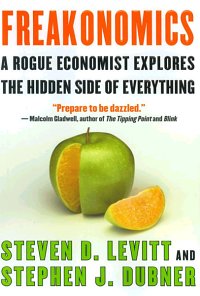
In the social sciences, unintended consequences are outcomes of a purposeful action that are not intended or foreseen. The term was popularised in the twentieth century by American sociologist Robert K. Merton.
A subsidy or government incentive is a type of government expenditure for individuals and households, as well as businesses with the aim of stabilizing the economy. It ensures that individuals and households are viable by having access to essential goods and services while giving businesses the opportunity to stay afloat and/or competitive. Subsidies not only promote long term economic stability but also help governments to respond to economic shocks during a recession or in response to unforeseen shocks, such as the COVID-19 pandemic.

Goodhart's law is an adage often stated as, "When a measure becomes a target, it ceases to be a good measure". It is named after British economist Charles Goodhart, who is credited with expressing the core idea of the adage in a 1975 article on monetary policy in the United Kingdom:
Any observed statistical regularity will tend to collapse once pressure is placed upon it for control purposes.

In general, incentives are anything that persuade a person to alter their behavior in the desired manner. It is emphasized that incentives matter by the basic law of economists and the laws of behavior, which state that higher incentives amount to greater levels of effort and therefore higher levels of performance.

A refrigerant is a working fluid used in the refrigeration cycle of air conditioning systems and heat pumps where in most cases they undergo a repeated phase transition from a liquid to a gas and back again. Refrigerants are heavily regulated due to their toxicity, flammability and the contribution of CFC and HCFC refrigerants to ozone depletion and that of HFC refrigerants to climate change.

Freakonomics: A Rogue Economist Explores the Hidden Side of Everything is the debut non-fiction book by University of Chicago economist Steven Levitt and New York Times journalist Stephen J. Dubner. Published on April 12, 2005, by William Morrow, the book has been described as melding pop culture with economics. By late 2009, the book had sold over 4 million copies worldwide. Based on the success of the original book, Levitt and Dubner have grown the Freakonomics brand into a multi-media franchise, with a sequel book, a feature film, a regular radio segment on National Public Radio, and a weekly blog.

The Energy Policy Act of 2005 is a federal law signed by President George W. Bush on August 8, 2005, at Sandia National Laboratories in Albuquerque, New Mexico. The act, described by proponents as an attempt to combat growing energy problems, changed US energy policy by providing tax incentives and loan guarantees for energy production of various types. The most consequential aspect of the law was to greatly increase ethanol production to be blended with gasoline. The law also repealed the Public Utility Holding Company Act of 1935, effective February 2006.

An air source heat pump (ASHP) is a heat pump that can absorb heat from air outside a building and release it inside; it uses the same vapor-compression refrigeration process and much the same equipment as an air conditioner, but in the opposite direction. ASHPs are the most common type of heat pump and, usually being smaller, tend to be used to heat individual houses or flats rather than blocks, districts or industrial processes.
Campbell's law is an adage developed by Donald T. Campbell, a psychologist and social scientist who often wrote about research methodology, which states:
The more any quantitative social indicator is used for social decision-making, the more subject it will be to corruption pressures and the more apt it will be to distort and corrupt the social processes it is intended to monitor.
The Vehicle Efficiency Incentive (VEI) was introduced in the 2007 Canadian federal government budget, aimed at promoting fuel-efficient vehicles. The VEI took effect on March 20, 2007, and it included a performance-based rebate program offering up to $2,000 for the purchase of a new fuel-efficient vehicle, a neutral treatment of a broad range of vehicles with average fuel efficiency that were widely purchased by Canadians, and a new Green Levy on fuel-inefficient vehicles.

Freedomnomics: Why the Free Market Works and Other Half-Baked Theories Don't is a book by writer and public policy researcher John R. Lott, Jr., author of previous works More Guns, Less Crime and The Bias Against Guns. Freedomnomics takes an economic look at the effects of the free market, and presents some arguments against those found in Freakonomics by Steven D. Levitt and Stephen J. Dubner. The publications The American and National Review ran positive reviews, with critic Robert VerBruggen stating that Lott "renders lots of charts, graphs and statistical analysis into clear, uncomplicated conversation."
An incentive program is a formal scheme used to promote or encourage specific actions or behavior by a specific group of people during a defined period of time. Incentive programs are particularly used in business management to motivate employees and in sales to attract and retain customers. Scientific literature also refers to this concept as pay for performance.

In economics, a negative income tax (NIT) is a system which reverses the direction in which tax is paid for incomes below a certain level; in other words, earners above that level pay money to the state while earners below it receive money, as shown by the blue arrows in the diagram. NIT was proposed by Juliet Rhys-Williams while working on the Beveridge Report in the early 1940s and popularized by Milton Friedman in the 1960s as a system in which the state makes payments to the poor when their income falls below a threshold, while taxing them on income above that threshold. Together with Friedman, supporters of NIT also included James Tobin, Joseph A. Pechman, and Peter M. Mieszkowski, Jim Gray and even then-President Richard Nixon, who suggested implementation of modified NIT in his Family Assistance Plan. After the increase in popularity of NIT, an experiment sponsored by the US government was conducted between 1968 and 1982 on effects of NIT on labour supply, income, and substitution effects.

The Streisand effect is an unintended consequence of attempts to hide, remove, or censor information, where the effort instead backfires by increasing public awareness of the information. The effect is named for American singer and actress Barbra Streisand, whose attempt in 2003 to suppress a photographer's publication of a photograph showing her clifftop residence in Malibu, California, taken to document coastal erosion in California, inadvertently drew far greater attention to the previously obscure photograph.
The Renewable Heat Incentive is a payment system in England, Scotland and Wales, for the generation of heat from renewable energy sources. Introduced on 28 November 2011, the RHI replaces the Low Carbon Building Programme, which closed in 2010.
Michael G. Vann is an American historian who serves as Professor of History at California State University, Sacramento. He teaches a range of world history courses, including 20th century world, Southeast Asia, imperialism, and genocide. His research specializes in the history of the French colonial empire, epidemic diseases such as the Third Bubonic Plague Pandemic, and Cold War era mass violence in Southeast Asia. Vann holds a Ph.D. in History from the University of California, Santa Cruz, where he was a student of Tyler Stovall and Edmund Burke III. His dissertation was on the history of white supremacy in French colonial Hanoi. He is a graduate of 'Iolani School in Honolulu, Hawai'i, his home town.

The Renewable Heat Incentive scandal, also referred to as RHIgate and the Cash for Ash scandal, is a political scandal in Northern Ireland that centres on a failed renewable energy incentive scheme that has been reported to potentially cost the public purse almost £500 million. The plan, initiated in 2012, was overseen by Arlene Foster of the Democratic Unionist Party (DUP), the then-Minister for Enterprise, Trade and Investment. Foster failed to introduce proper cost controls, allowing the plan to spiral out of control. The scheme worked by paying applicants to use renewable energy. However, the rate paid was more than the cost of the fuel, and thus many applicants were making profits simply by heating their properties.

Rodent farming is an agricultural process in which rodents are bred and raised with the intent of selling them for their meat. They are often categorised in a sub-category of livestock known as micro-livestock, due to their small size. Rodents have been used as food in a wide range of cultures, including Hawaiian, Vietnamese, French, Indian and Thai.

The Scholz cabinet is the current cabinet of Germany, led by Federal Chancellor Olaf Scholz. The cabinet is composed of Scholz's Social Democratic Party, Alliance 90/The Greens and the Free Democratic Party, an arrangement known as a "traffic light coalition" in Germany after the parties' traditional colours, respectively red, green and yellow, matching the colours of a traffic light (Ampel). This traffic light coalition-government is the first of its kind at the federal level in the history of the German federal republic.

The Great Hanoi Rat Massacre occurred in 1902, in Hanoi, Tonkin, French Indochina, when the French government authorities attempted to control the rat population of the city by hunting them down. As they felt that they were making insufficient progress, and due to labour strikes, they created a bounty programme that paid a reward of 1¢ for each rat killed. To collect the bounty, people would need to provide the severed tail of a rat. Colonial officials, however, began noticing rats in Hanoi with no tails. The Vietnamese rat catchers would capture rats, sever their tails, then release them back into the sewers so that they could produce more rats.













